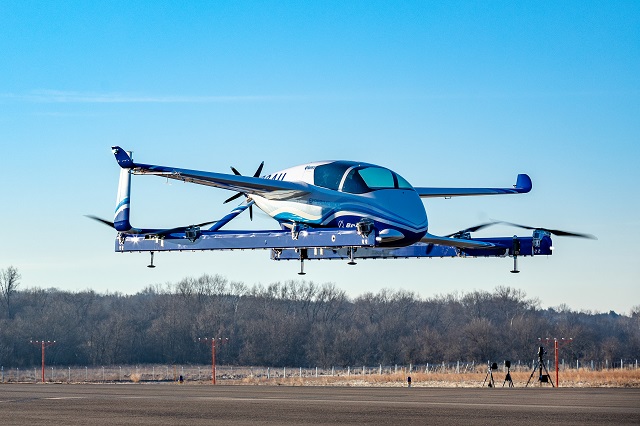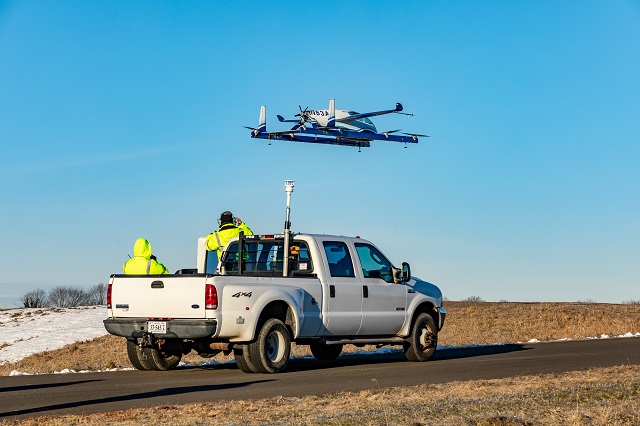Boeing has successfully completed the first flight of an in-development autonomous air vehicle, a step forward in Boeing's race to develop an aircraft capable of providing commercially viable intra-urban air transportation.
The electric vertical take-off and landing (eVTOL) prototype aircraft, which Boeing calls an "autonomous passenger air vehicle", lifted off for the first time on 22 January at Manassas Regional airport outside Washington, DC, Boeing says.
The flight lasted less than one minute, during which Boeing "tested the vehicle's autonomous functions and ground-control systems", the manufacturer says.

Boeing's eVTOL prototype took off on its maiden flight on 22 January.
Boeing
"Future flights will test forward, wing-borne flight, as well as the transition phase between vertical and forward-flight modes," Boeing adds. "This transition phase is typically the most significant engineering challenge for any high-speed VTOL aircraft."
Boeing's recently established in-house autonomous flight research unit Boeing NeXt developed the aircraft in partnership with Boeing subsidiary Aurora Flight Sciences. Boeing acquired Aurora, which specialises in unmanned flight, in November 2017 and established NeXt in 2018.
Boeing designed the prototype aircraft, which measures 9.1m (30ft) in length and 8.5m in width, to have range of 43.5nm (80.5km), it says. It has eight lift motors and one cruise propeller, Boeing says.

The first flight lasted less than one minute.
Boeing
The prototype is Boeing's concept for a new type of small, electric aircraft that many people predict will eventually provide Uber-like intra-city air transport – so-called "urban air mobility".
Airbus has been working on an autonomous VTOL air taxi design, having completed first flight of a prototype early last year.
"Air mobility is becoming more and more part of this vertical lift future," Airbus head of commercial aircraft and incoming chief executive Guillaume Faury said last week.
"There is a convergence in technologies and social needs that will make urban air mobility become a reality," he added. "We believe there is a business case."
Earlier this month, Bell unveiled its urban air mobility design – a potentially pilotless aircraft with six tilting ducted fans and a hybrid-electric powertrain.
The ability to fly without a pilot will enable the aircraft to carry an extra passenger, providing significantly improved economics, insiders say.
But the future of air taxi services remains uncertain, requiring "step change" improvements to autonomy, detect-and-avoid and noise management technology, according to a 2018 NASA study. Governments will also need to development new sets of regulations to oversee the industry.
Story updated on 23 January to include more details about Boeing's prototype.
Source: FlightGlobal.com






















